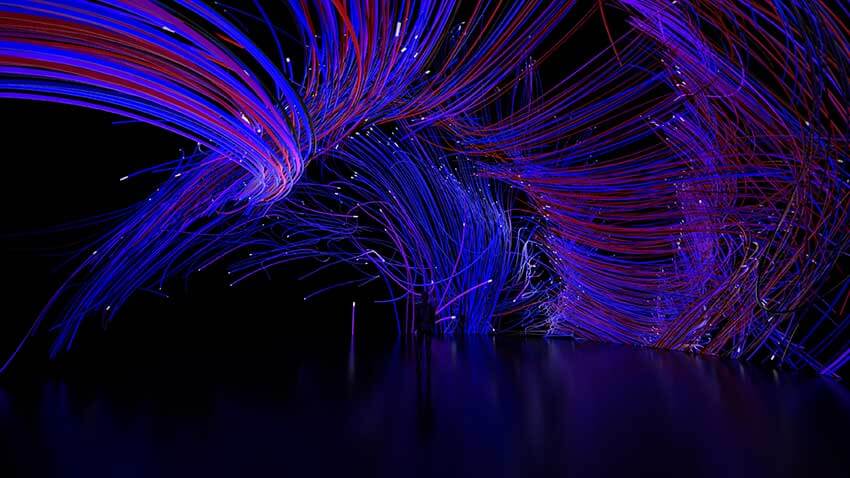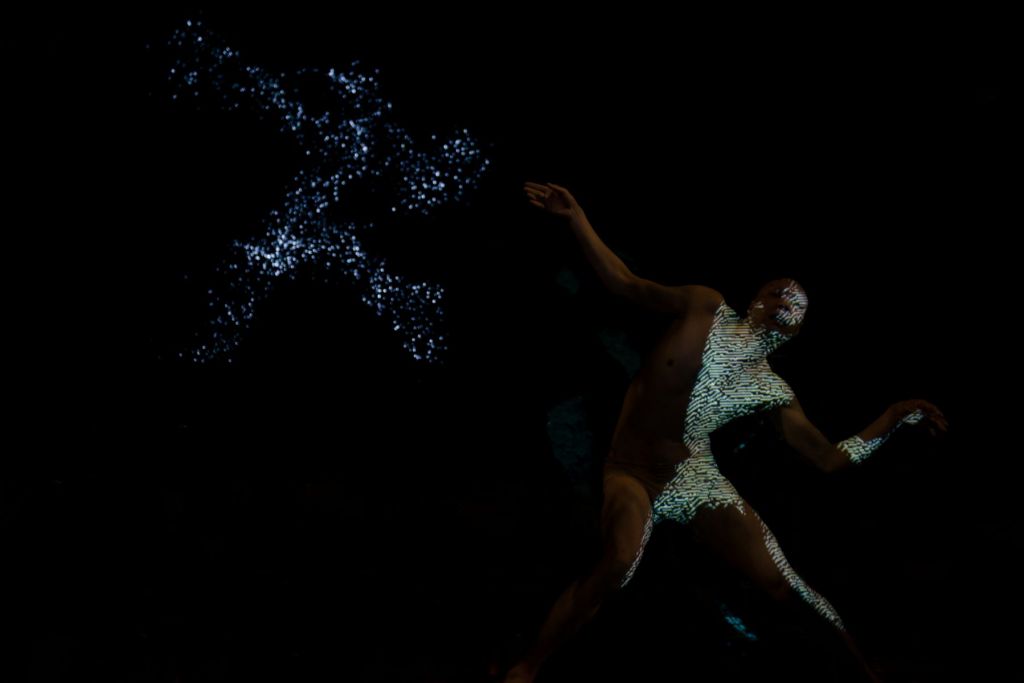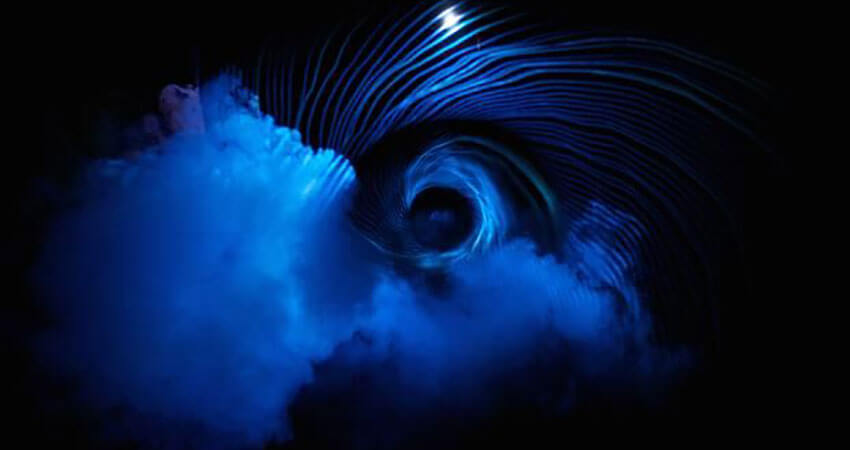Interview by Meritxell Rosell

In Tarkovsky’s masterpiece Stalker, the stalker, a sort of a smuggler visitor guide to the Zone [an exclusion area in which the normal laws of reality do not apply and remnants of seemingly extraterrestrial activity lie undisturbed among its ruins], enquires, partly to one of his fellow travellers partly to himself: Are you awake? You were speaking of the meaning…of our…life…of the unselfishness of art…Take music, for instance. Less than anything else, it is connected to reality […]. And yet, music, as if by some miracle, gets through to our hearts. What resonates in us in response to noise brought to harmony, making it the source of the greatest delight that stuns us and brings us together? What’s all this needed for? And most importantly, who needs it? You would say, “No one. And for no reason.” Unselfishly. No. I don’t think so. After all, everything has some sense. Sense and reason.
It would be hard to find more beautiful words to frame the work of Dasha Rush. If one thing overarches the Berlin-based producer, experimental sound artist and Dj‘s practice is her limitless quest for metaphysical answers: from astrophysics to extreme natural phenomena, the depths of the human psyche or reflecting on what is the purpose of art itself. Mirroring Tarkovsky’s characters, exploring the tension between perception, reality and the inexorable forces of nature and physics laws.
Known for her relentless techno Dj sets and productions, which have taken her to the most renowned clubs and festivals around the world, Dasha Rush has also developed a career pursuing more experimental needs, which have also taken myriad forms. From live sets, installations, audiovisual shows and dance performances, she’s also been closely involved with Raster-Noton, the legendary minimal experimental record label where she released her full-length album Sleepstep in 2015.
But with her multidisciplinary performative productions, the artist’s work unfolds into her most ambitious. The ambients and atmospheres she creates can be ethereal and oneiric, but also dense mental spaces for inner reflection. In 2014, she produced the audiovisual show Antarctic Takt, with who would become a regular collaborator, the visual artist Stanislav Glaszov. Incepted as an immersive experience for Berlin’s Kraftwerk, the piece is a journey into an abstract Antarctica, blending art, nature and technology.
In Spades of Hearts (2016), following a residency in electronic music and visual arts at Banff Centre for the Arts in Canada, the artist explored her interest in astrophysics and the idea of the void through another audiovisual performance again in collaboration with Stanislav Glaszov. With different screens layered out and a sense-numbing score, the show is a fearless visual experience into the realms of a black hole.
In Les Territories Ephemeres (2018) and ZONE05 (2019), Dasha brings her interest and influences of dance and theatre from the time she lived in Paris and was actively involved in those scenes in the city. Les territories Ephemeres the piece aims to interpret the fragility of our memory and relativity of perception through an experimental theatrical performance, combining AV art, dance, real-time generated visuals, electronic music and abstract poetry, together with dancers Valentin Tszin and Stanislav Glazov. The piece also reflects on how different types of art are preserved, both in the physical and mental realms.
In her most recent project, Dasha Rush goes a step beyond memory and perception, delving into the depths of the brain itself. In Aurora Cerebralis (2019), she teams up with digital artist Alex Guevara to create an audiovisual representation of the inside of the human brain, trying to understand the most profound parts of human consciousness by creating a galaxy of firing neurons. The soundscape is designed to disconcert us with synchronicities like in Tarkovsky’s films, where we never know if the character’s experience is a state of mind, a dream or pure reality.
When meeting in person, Dasha Rush’s eyes spark with a child’s curiosity, like a pair of wide lenses open to the magnitude of infinite possibilities. And the sincere assertiveness and certainty to keep researching and bringing to life all these imagined environments layered with techno, visual explorations and performative art.



Your work has a lot of inspiration from science and scientific phenomenology; where does the interest come from?
I am interested in science because I feel that I hope to answer some fundamental questions; these can be personal, more transcendental or more global, but still seen through an individual filter. There’s also a source of inspiration in science. When I read something, it makes me think, and feel curious and alive; it’s like something beyond our control or existence is fascinating to me.
Thinking about particle physics and also by scientific observation. I do believe in some sort of energetic collective consciousness, the brain as a little universe with millions and millions of connections.
This reminds of one of your most recent projects, Aurora Cerebralis. What was the intellectual process behind it?
The main idea behind Aurora Cerebralis was to put people inside the brain, so giving the feeling of being inside the mind and observing the formation of neural networks. Visually for me, the brain resembles some sort of galactic universe, and connections, information…and ultimately, electricity.
The fact that it’s audio and visual it plays around with your perception without you even not noticing it. Certain sounds follow the visual and the audio signal, but at some point then, they get desynchronized, and that starts making it disorientating and puzzling for the viewers’ brains.
The initial idea for the project was to do live brain scans to pick the brainwaves, but it became too complicated. I wanted to use the helmet or sensors to record brain activity in real-time, but technically it’s very complicated. But maybe I will do a version of the project, like an installation version.
The project also explores the idea of the brain as a god, in the sense of the brain being central to us and our existence; we are our own gods because we create our own reality. In a sense, and there are different theories about this, everything that we see or imagine, even the connection to something superior, ‘s a projection of your brain or maybe the brain it’s just a filter. Still, in any case, we “see” everything through our brains.
In comparison, in Dark Hearts of Space, the black hole is something even beyond, more related to physics (even though also perceived through our brains and interpreted by our minds), the idea that everything is just a complete void. And how would you experience the void and the notion of ultimate silence? How would you make musical silence? Then you think it’s probably a vibration, a low frequency. Moreover, how do you visualise “nothing”? That was the main idea behind that project.
From the deep black holes to the intricacies of the brain, what has been the journey?
It’s not like I, all of a sudden, turn to the brain; there’s a long-running, parallel interest in physics, neuroscience…all these things that inspire me, and then I work with sound, so I try to connect all these interests.
And it goes progressively; you do research and take up information. For example, I follow this neuroscientific, Tatiana Chernigovskaya. She’s now popularising neuroscience, trying to make it simple to explain to people. I really like how she does it. And that makes me think I would like to study psychoacoustics and the psychological responses associated with sound, connecting sound and the brain.
One of your recent projects, Territoires Éphémères, is an experimental theatrical performance with real-time generative visuals and abstract poetry, where you explore ephemerality and memory formation. Could you tell us more about it?
The performance starts with Valentin, the dancer, representing a clean surface. Then generative projections by Stanislav come in, meaning all the genetic memory and information. The dancer has started having an imprint and forming memories associated with physically growing. He sometimes fights the outside information or interacts with that same information, basically representing the formation of memory and consciousness and the duality of forming a memory or not. Then at the end, there are five minutes of improvisation, where we exchange roles, I dance, and Valentin executes the sound.
This represents the memory you recall as you think you observed it, but almost like a foreign person, is it real or it is not? Is it all the other way around? The project also reflects on the ephemerality of certain forms of art; the idea of the performance refers to transitory audiovisual matter not intended to be retained or preserved.
Our initial plan was not to have any documentation, reflecting on the idea that if performance art is ephemeral, it’s always a little bit different, always adapting to the space. And because our performance is generally in different spaces, we are regularly changing little things. Even though the basic structure is kind of similar, it never stays in the same exact form. When you compare it to a painting or a sculpture which doesn’t strictly change over time, this is where our reflections go.
The idea, too, was not to document any of the performances; but it didn’t go that well, as you are asked to show graphic representation. The performance also explores the inconsistency of memory, physical and mental frictions and relativity of perception, basically how you can manipulate and shape memories; how you can even change the personality of a person, for instance, influencing a childhood memory.
On the other hand, your brain can create the wrong memories when taking some substances or removing or damaging parts of the brain, such as the amygdala or hippocampus. There’s this famous case of a man who, because of epilepsy, got a part of his brain removed, and while all his old memories were intact, he couldn’t form new ones. At the hospital, for example, he couldn’t remember that the same nurse was visiting him every morning.
And there’s another interesting case, another man, who after an accident, he was able to recognise his mother’s voice on the phone. Still, whenever he would see her, he wouldn’t recognise her image. He had lost his visual memory; his visual cortex had been damaged and wasn’t working correctly. Therefore, he couldn’t make the right visual connections while the sound was intact. The brain is crazy exciting! And because I make music, I have to bring all these things together.
What new territories are you exploring at the moment?
I’m working more with vocals. It’s mostly spoken word and a sort of reference to hip hop, but it’s not hip hop in the classic term. I’m also using modifications in the voice, pitching it down so it sounds between male and female. It’s agender and sounds nicely weird. This is what I’m experimenting and working on at the moment; a new album, probably coming out in 2021.
What’s the new technological development that you are more curious about?
Quantum computing, for example, is fascinating, but I can’t really say it’s my interest because I don’t actually know what it is. I do know theoretically, but I don’t know how it works. Something that is more down to earth is 3D printing houses. Imagine being able to design and print your own home; that’s a great future!
Then in terms of sound, I would like to explore more ambisonic sounds and environments, like being in a bubble where the sound comes from everywhere. Lastly, it’s not really a technology, but I would also like to explore sensorial smells. Work with aromas in connection to sound, temperature or light, basically sensorial things to create like a synesthetic situation. Scent is not directional. You can make the sound and light directional, but with smell, it is challenging. It’s tough to channel smell.
What is your chief enemy of creativity?
Survival and children 🙂 Sometimes they can boost your creativity, but sometimes they stop you. Obviously too much time for the Internet and social media, but also the system, and the industry when it becomes product-oriented when it comes to business when there is no more freedom to do things.
You couldn’t live without…
Music. Art. Talented people.





